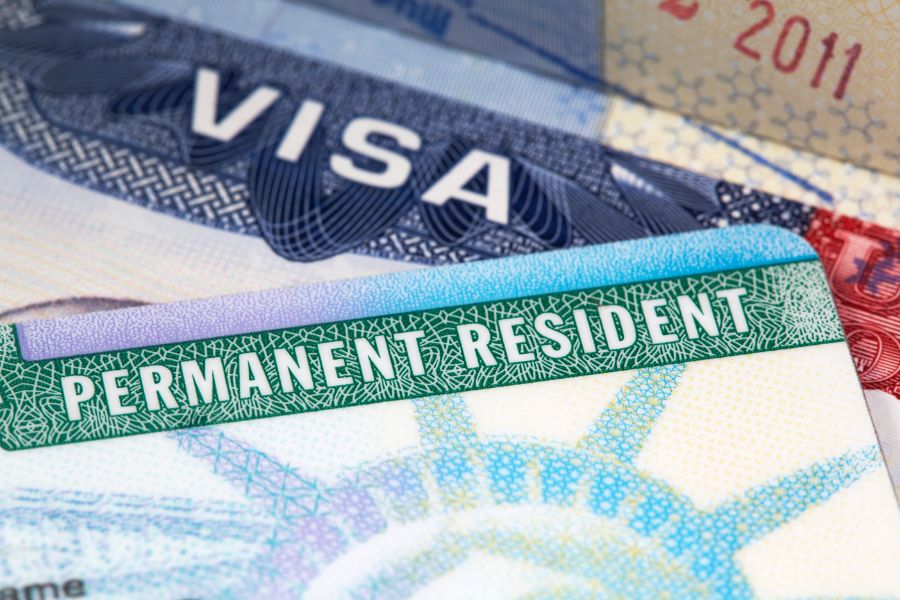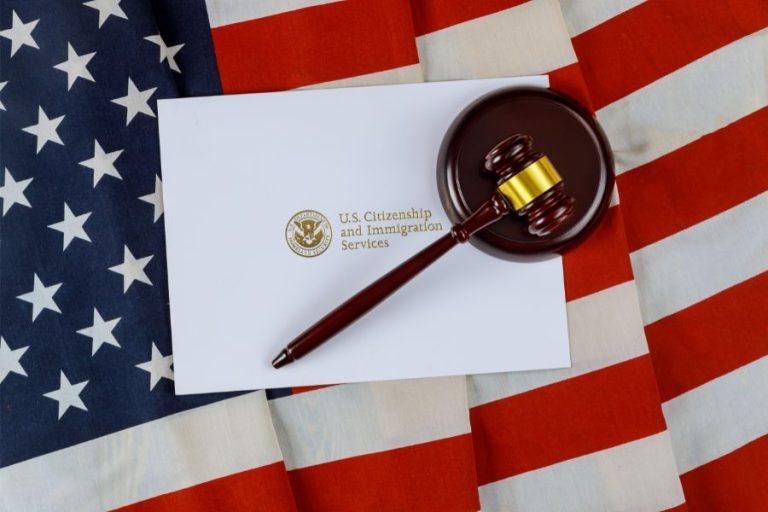Visa Versus Green Card: Deciphering the Best Path for Your Situation
Choosing between a visa and a green card for your U.S. immigration needs depends largely on your specific circumstances. Visas, providing temporary stays, come in various types such as tourist, work, student, and investor. They permit legal entry for a set duration and specific purposes but might limit your job flexibility. Green cards, on the other hand, offer permanent residency with greater work flexibility and the potential to sponsor family members, albeit with longer processing times. Deciding what’s best for you involves evaluating your long-term goals, career plans, family considerations, and lifestyle preferences. If you journey further, you’ll uncover even more valuable insights to inform your choice.
Key Differences: Visa Vs Green Card
Diving into the key differences between a visa and a green card, it’s important to understand that visas are temporary permits for entry and stay in the U.S., while green cards grant you permanent residency. With a visa, you’re granted a temporary stay, often tied to a specific purpose such as study or work. But remember, visas come with expiration dates, limiting your time in the U.S.
On the other hand, holding a green card gives you the freedom to work and live permanently in the U.S., without worrying about expiration dates. It offers more stability and flexibility, allowing you to change employers without risking your status. Plus, as a green card holder, you have the privilege to sponsor family members for residency.
One significant difference to note is in career choices. As a visa holder, you’re generally tied to your sponsoring employer. But with a green card, you’re free to explore different career paths, reflecting your true passions and ambitions. Understanding these differences will help guide your decision, ensuring you choose the right path on your journey to living and working in the U.S.
Types of U.S. Visas
When it comes to U.S. visas, there’s a variety of options, such as tourist (B-2), work (H-1B), student (F-1), and investor (E-2) visas, each designed for different purposes and durations of stay. These types of visas fall into two main categories: nonimmigrant visas, for those planning temporary stays, and immigrant visas, which can lead to permanent residency.
Nonimmigrant visas include the tourist, student, and certain employment-based visas. They’re ideal if you’re planning a short-term stay, such as for tourism, study, or temporary work. However, you must meet specific eligibility criteria and ensure strict compliance with visa conditions.
Immigrant visas are designed for those seeking to live in the U.S. permanently. Family-based and some employment-based visas fall into this category. There are also dual intent visas, such as the H-1B, which allow temporary stay but also consider the holder for a future permanent immigration status.
Each visa type has its own requirements and processes, so it’s vital to understand the specifics before you apply. Remember, the best visa for you depends on your individual situation and objectives.
Benefits of Holding a Visa
If you’re considering a temporary stay in the U.S., holding a visa offers several benefits. It provides legal entry into the country, allowing for specific durations of stay based on your visa type. This flexibility can be particularly beneficial if you’re unsure about your plans or if your circumstances might change.
One of the key benefits of a visa is the opportunity it provides for work, study, or tourism. While there may be work restrictions depending on the visa category, it still opens doors to employment opportunities otherwise inaccessible to non-residents.
Equally important is the assurance of compliance with U.S. immigration laws. A visa is a recognized legal document that helps protect you from the risk of deportation, granted you follow its conditions.
Additionally, visas can be extended or renewed, providing you with the freedom to continue your journey in the U.S. as long as you maintain your status. This renewal process, though sometimes complex, is an advantage that allows for continuous temporary stays.
In essence, holding a visa provides flexibility, legal protection, and opportunity – all valuable benefits for your temporary stay in the U.S.
Challenges With Visa Status
While the benefits of holding a visa are numerous, it’s also important to assess the challenges that come with visa status. Visas can be restrictive, often tying you to a specific employer and limiting your job flexibility. This can lead to issues if your employment situation changes or if you desire more freedom in your professional life.
Renewing visas can also pose a significant hurdle. The process is often time-consuming and expensive, which can cause disruptions to your work and life. It’s not just the process itself that can be challenging, but also the uncertainty that comes with it. Because of the temporary status of visas, you may constantly worry about your future in the U.S.
Moreover, changes in visa regulations or policies can suddenly affect your ability to stay and work in the country. This level of uncertainty can be stressful and unsettling. Additionally, visa status often means limited access to certain government benefits, which green card holders may enjoy.

Types of Green Cards
Often, understanding the different types of Green Cards can greatly help in your immigration journey. Each type has specific eligibility criteria and application processes tailored to various situations.
Firstly, we have the family-based Green Cards. If you’re a relative of U.S. citizens or Green Card holders, this might be your path. You’ll need to demonstrate your familial connection to qualify.
Next, employment-based Green Cards are designed for those with job offers in the U.S. An employer typically needs to sponsor your application, showing that you have the necessary skills and qualifications for the job.
For those fleeing persecution, refugee or asylum-based Green Cards are available. You’d need to prove your status as a refugee or asylee, illustrating the risks you face in your home country.
Finally, there’s the diversity lottery-based Green Card. The U.S. runs a lottery program aiming to diversify its immigrant population. If you’re from a country with low immigration rates to the U.S., you may be eligible to enter this lottery.
Understanding these options helps you find the most suitable path for your situation, guiding you toward the freedom you desire.
Advantages of a Green Card
Without a doubt, obtaining a Green Card comes with numerous advantages that can greatly enhance your life and prospects in the United States. As a Green Card holder, you’re gifted the freedom of permanent settlement, free from the anxiety of visa renewals and the instability they can bring. You gain employment stability, with the flexibility to change jobs without jeopardizing your immigration status.
Key advantages include:
- Work Flexibility: You can switch employers or even start your own business. Your hard work fuels your success, not your visa conditions.
- Family Sponsorship: You can bring your loved ones closer. Sponsor your family members for their own Green Cards, offering them the extensive benefits of U.S. life.
- Path to US Citizenship: Fulfill the residency requirements, and you’re on your way to becoming a U.S. citizen. It’s more than a card; it’s a step towards a new identity.
These benefits represent just a few of the freedoms that Green Card holders enjoy. So, when you’re weighing your options, consider the advantages and freedom that a Green Card can offer. You have the power to shape your future in the U.S.
Potential Green Card Drawbacks
Despite the numerous advantages of holding a Green Card, it’s important to evaluate the potential drawbacks that can come with it. For starters, green card holders often face longer processing times for their applications compared to those with temporary visas. This involves extensive documentation which must clearly demonstrate your eligibility for permanent residency.
Additionally, certain federal benefits are not immediately available to green card holders, only becoming accessible once you attain U.S. citizenship. This limitation can impact your financial planning and security. The need for renewal every 10 years is another aspect to ponder. This not only involves administrative tasks but also requires continuous proof of your residency status.
Furthermore, stricter requirements apply to green card holders when it comes to maintaining their residency status. This implies that not only do you have to abide by U.S. law, but also that you can’t be outside the U.S. for prolonged periods without risking your status.
Ultimately, the path to a Green Card is filled with challenges, but understanding these potential drawbacks can help you make an informed decision, and navigate your journey to freedom more effectively.
Choosing Between Visa and Green Card
When it comes to choosing between a visa and a green card, you’ll want to ponder your long-term goals, career plans, and family ties in the U.S. To make an informed decision, you’ll need to understand the distinct advantages and limitations of each.
- Visas are best for temporary stays or specific work periods. They offer flexibility, but also come with set validity periods and are often tied to specific employers.
- Green cards offer stability and the path to U.S. citizenship. They allow for indefinite living and working in the U.S. and provide more flexibility in changing employers and sponsoring family members.
- Family considerations play a significant role. If you plan on having your family join you, a green card may be a better choice as it allows for the sponsorship of family members.
Take into account the renewal requirements, rights, and protections that come with each option. Remember, your decision should align with your long-term goals and career plans. Whether you’re aiming for long-term residency or eventual citizenship, choose wisely.







